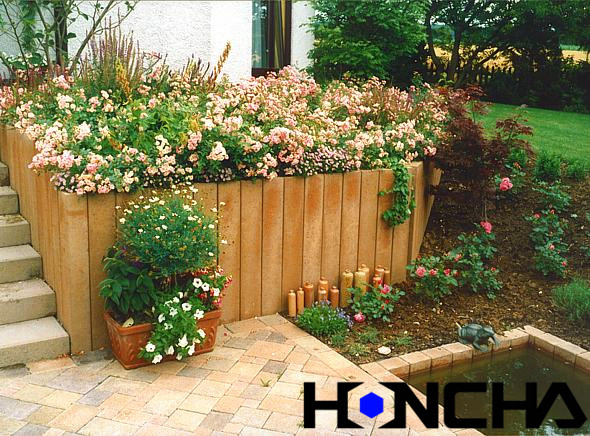1. The differences between mould vibration and table vibration:
In shape, motors of mould vibration are on both sides of the block machine, while the motors of table vibration are just under the moulds. Mould vibration is suitable for small block machine and producing hollow blocks. But it is expensive and very hard to maintain. Besides, it wears quickly. For table vibration, it is suitable for making various blocks, such as paver, hollow block, curbstone and brick. Furthermore, the material can be fed into mould evenly and blocks with high quality as a result.
2. The cleaning of mixer:
There is two door beside the mixer for MASA and easy for workers to get in to clean. Our planetary mixer has been improved largely compared with the twin shaft mixer. The 4 discharge doors are located on the top of mixer and easy to clean. What is more, the mixer is equipped with sensors to improve the safety performance.
3. The features of pallet-free block machine:
1). Advantages: Elevator / lowrator, pallet conveyor / block conveyor, finger car and cuber are not needed if using pallet-free block machine.
2). Disadvantages: the circle time will be increased to at least 35s and the quality of block is hard to control. The maximum height of block is only 100mm and hollow block can’t be made in this machine. Besides, the layer of cubing will be limited equal and less than 10 layers. Moreover, only QT18 block machine can be equipped with the pallet-free technology and hard to change the mould. Our recommendation for customers is buying 2 production line of QT12 instead of 1 production line of QT18, because at least l machine can be guaranteed to carry out if the other one is out of service for some reasons.
4. “Whitening” in the curing process
In the natural curing, frequent watering isn’t always beneficial for curing, by which water vapor freely move in-and-out of the blocks. For that reason, the white calcium carbonate is gradually accumulated on the surface of blocks, causing “whitening”. Therefore, to protect blocks from whitening, watering should be forbidden in the curing process of pavers; while regarding hollow blocks, watering is permitted. In addition, when it comes to cubing process, the blocks should be wrapped by plastic film from bottom to top to protect the block from dripping water in plastic film to affect the quality and beauty of blocks.
5. Other problems related to curing
Generally speaking, curing time is about 1-2 weeks. However, curing time of fly-ash blocks will be longer. Because the proportion of fly ash is greater than cement, longer hydration time will be required. The surrounding temperature should be kept above 20 ℃ in natural curing. Theoretically, natural curing method is suggested because it is complicated to build the curing room and costs much money for steam curing method. And there are some details that should be taken into consideration. For one, water vapor will be accumulated increasingly on the ceiling of the curing room and then drop on the surface of blocks, which will affect the quality of the blocks. Meanwhile, water vapor will be pumped into the curing room from one side. The further distance from steaming port, the higher moisture & temperature is, so the better curing effect is. It will result in inequality of curing effect as well as blocks quality. Once the block is cured in the curing room for 8-12 hours, 30%-40% of its ultimate strength will be gained and it is ready for cubing.
6. Belt conveyor
We use flat belt conveyor instead of trough type belt to transform the raw material from mixer to block machine, because it is easier for us to clean flat belt, and materials are easily attached to trough belt.
7. The sticking of pallets in block machine
Pallets are very easy to be stuck when they are deformed. This problem is directly resulted from the design and quality of machines. Therefore, pallets should be processed specially to meet the requirements of hardness. For fear of deforming, each of the four corners is arc-shaped. When making and installing the machine, it is better to reduce the potential deviation of every single component. In this way, the lever of deviation of the whole machine will be reduced.
8. Proportion of different materials
The proportion varies depending on the required strength, cement type and different raw material from different country. Taking hollow blocks for example, under the usual requirement of 7 Mpa to 10 Mpa in intensity of pressure, the ratio of cement and aggregate can be 1:16, which saves cost most. If better strength is required, the above ratio can reach 1:12. Moreover, more cement is needed if producing single-layer paver to smooth the relatively coarse surface.
9. Using sea sands as raw material
Sea sands can only be used as materials when making hollow blocks. The disadvantage is that the sea sand contains lots of salt and gets dry too faster, which is difficult to form block units.
10. The thickness of face mix
Normally, take pavers for example, if the thickness of the double-layer blocks reaches 60mm, then the thickness of face mix will be 5mm. If block is 80mm, then the face mix is 7mm.
Post time: Dec-16-2021

 +86-13599204288
+86-13599204288
